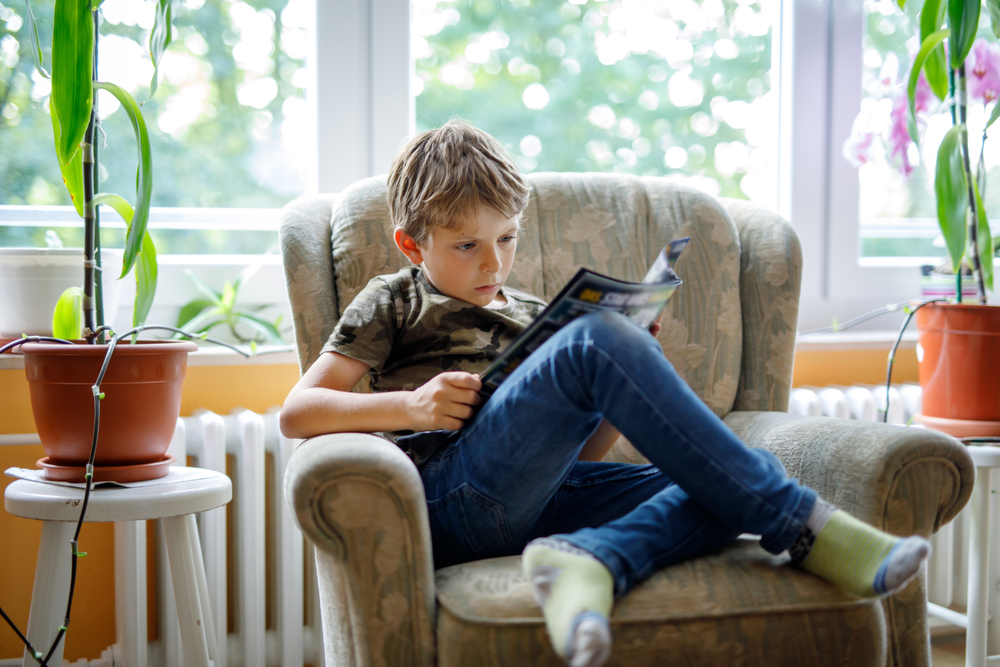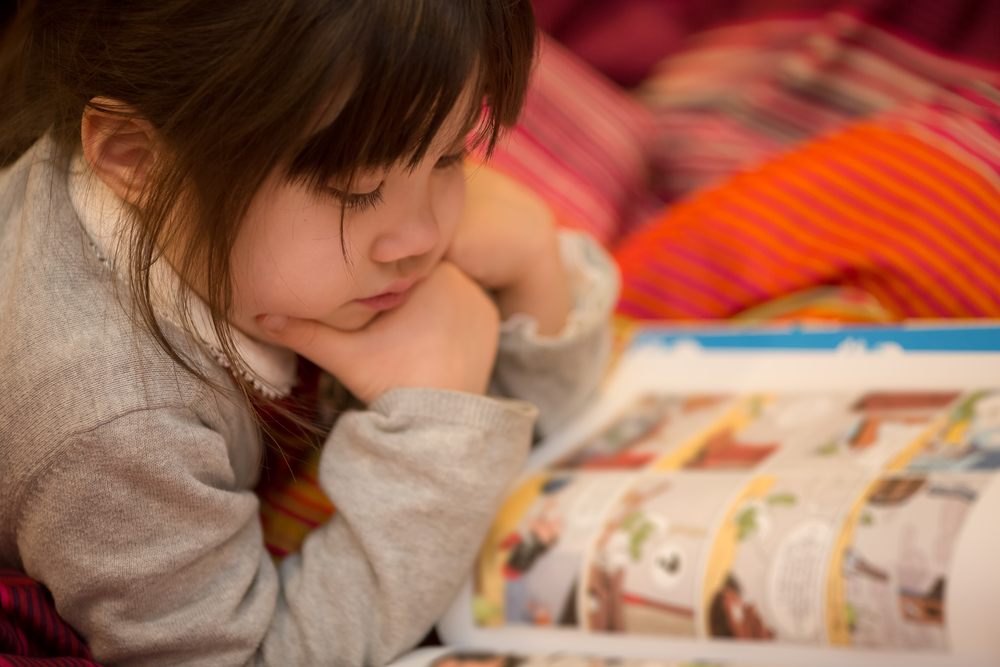
All children should be reading regularly. While parents can use apps, worksheets, games and activities to encourage reading and develop literacy, sometimes the nightly reading minutes and enrichment can feel less than entertaining.
When kids seem to be bored with reading traditional books or stories, encourage them to read other materials. Expand the path of the reading journey to help children find materials that they like reading. Provide kids reading help by using these alternative reading materials:
- Magazines
- Comics
- Newspapers
- Graphic Novels
- Manuals
All Reading is Beneficial
Many parents encourage their children to read books. Parents can empower children to read books that they enjoy and that interest them. Take children to the library and let them walk around the children’s section and explore different options. Help them find books at their reading level that appeal to them.
However, parents should understand that reading encompasses text beyond bound books. Consider mixing up the media to encourage children to explore different interests.
While it might be tempting for parents to ‘assign’ a book to their child to get them to read, picking a book for a child can take away the joy. In school, especially in upper elementary grades, children may be assigned specific books.
At home, let children have the power of selection. This even means letting children read alternative media in the library beyond the standard books.

Magazines
At the library, let children explore the magazine section; parents can focus on magazine titles that are geared towards children.
Popular magazine titles for children include Highlights, Ranger Rick, and National Geographic for Kids. However, there are many other magazines for children. In addition, some children might even gravitate to magazines related to specific interests like science and technology.
Children’s magazines might include a mix of nonfiction articles. Others could include short stories. Many have games or activities, too. Let children read and explore magazines and talk to them about what they read and what they learned.

Comics
The comics section in daily newspapers has thinned out over time. However, these short story snippets can be fun and easy for children to read. Some comics are funny, but others are based on family life or other topics.
Comic books tell a longer story. Some children may be very into a particular comic book character and also could enjoy collecting the comic book series.
Comic books could be a great reading option for children because they include lots of illustrations. These pictures help show the action of the story and the visual context could be beneficial if children are struggling with comprehension.
Not all comic books are appropriate for younger audiences, though. Parents may research different options to ensure that children can find an age-appropriate comic book on their reading level.
The site Childhood 101 compiled a list of the best comic books for children ages 6 to 13. Titles include Catwad by Jim Benton, Wallace the Brave by Will Henry, and many others.

Newspapers
Some children want to be journalists when they grow up. They may gravitate towards reading newspapers. Typically, newspaper articles are shorter and written on a level that is easy to read. These articles have to be written at a reading level that is accessible to a wide audience.
Let children explore their local paper. They can read stories about their community and learn about local events, too.
Graphic Novels
Graphic novels are part book and part comic. They can be a perfect hybrid medium for children who need illustrations to break up larger chunks of story text. Graphic novels tell the story in pictures and in words—much like a comic book.
Children can now read Ann M. Martin’s The Baby-Sitter’s Club series in graphic novel form. Dav Pilkey also has created many great graphic novels for kids—including Dog Man.
Even adults can read graphic novels. In fact, NPR compiled a list of favorite comics and graphic novels. These illustrated stories can help children see the story as it unfolds. Graphic novels show children the characters in the story; children may like that they can see a visual depiction of the character and better understand the world of the story.

Manuals, Guides and Other Books
Some children love tech languages. They may really enjoy reading ‘how to’ guides or even instruction manuals. Children have different interests and this can carry over into their reading habits.
If a child wants to read a manual aimed at a tech audience, let them. Ask them about what they are learning. Parents might be surprised at what they can pick up from these unique materials.
Let children explore different resource books. Maybe they love to read old encyclopedias. Perhaps they want a tech book focused on a specific product. Some children want to read all about engineering or even architecture.
There are travel books focused on different sites in a specific country. There are books on artists or particular works of art.
There are children who love to read about the weather. They may want to read beyond simple stories of thunderstorms and clouds. They may gravitate towards more advanced material or books that go into detail about specific weather phenomena.
Sometimes parents will see a child reading a manual and think that it’s boring or that the child shouldn’t read it. To the child, though, that manual could be entertainment or it could just pique their interest. If a child has the ability to comprehend what they are reading, let them read the manual. All books encourage learning and exploration.
How Do Alternative Reading Materials Help Children?
All reading can help children. Most teachers encourage children to read every day. Some teachers will even tell parents that they don’t care what the child reads; they simply want them to read.
Every written medium—books, newspapers, comics, magazines, etc.—can help provide information in a unique way. Books can be fiction or nonfiction. Magazines may have a specific focus and might include interviews, informative articles, nonfiction stories and even games. Newspapers include events and articles about a local region.
Comics are often humorous and tell the story through pictures and words (thought bubbles). Even manuals and guides help children learn about different places, technology or something else entirely.
No matter what a child reads, parents should talk to them about it. Ask questions about what they liked or what they didn’t like. What did they learn from the newspaper articles? What was their favorite article in their magazine? What did the manual teach them?
Parents might view alternative reading materials as inferior to a classic book. Yet, any medium that encourages a child to read can be beneficial in that it helps the child to love the written word. When a child understands that reading is fun, parents have won the hardest part of the battle.
When children come home from school and parents are reminding them to do their nightly reading minutes, ask them what they want to read. Give them options beyond books. Present children with choices: books, magazines, comics, etc. Then see what they choose.
Reading is a journey, and every medium helps children discover a different part of that journey. Let children go on an adventure, and let them choose the path that they take. Then watch where the journey takes them.

 Español
Español